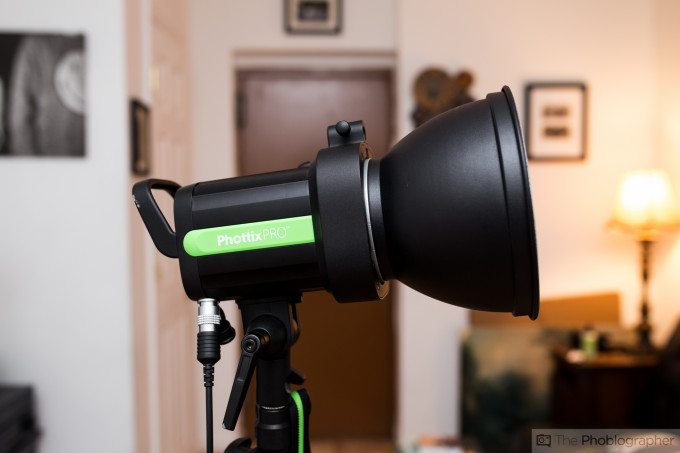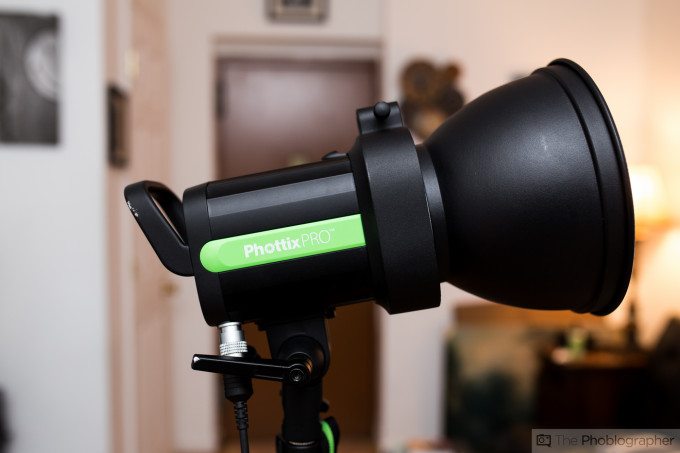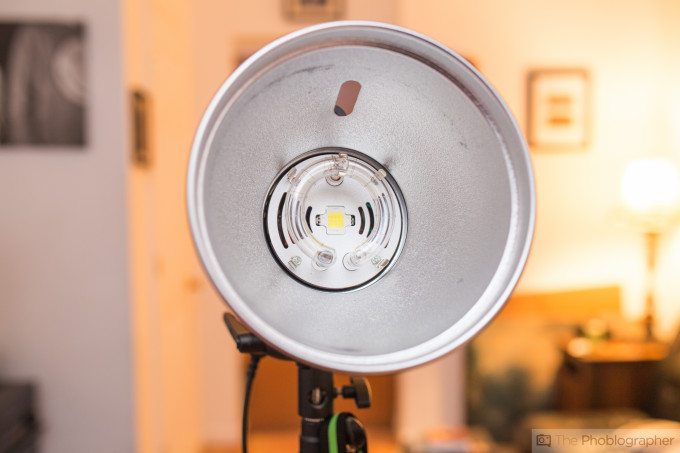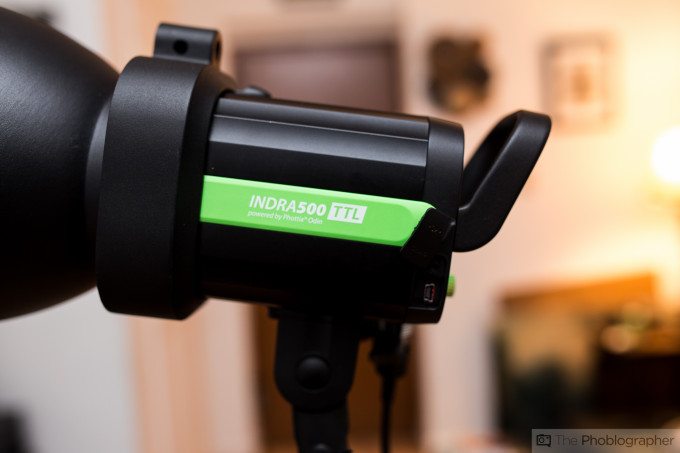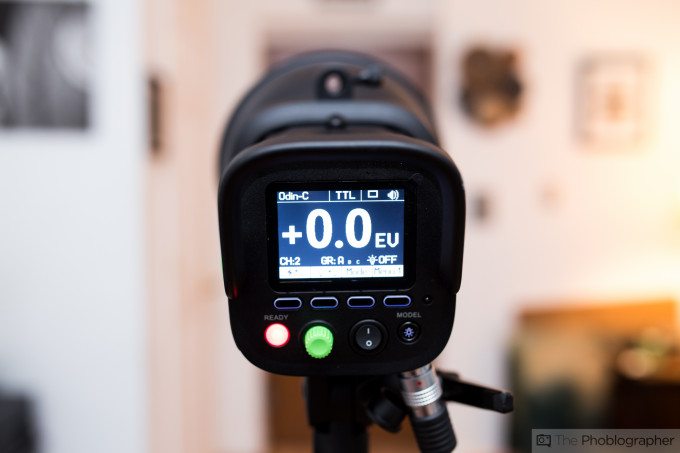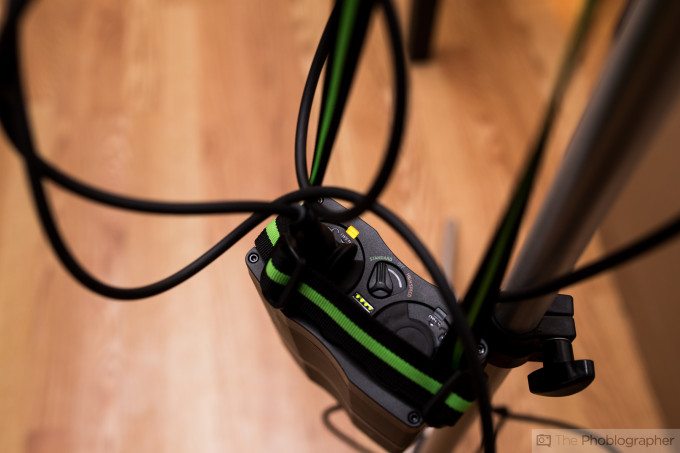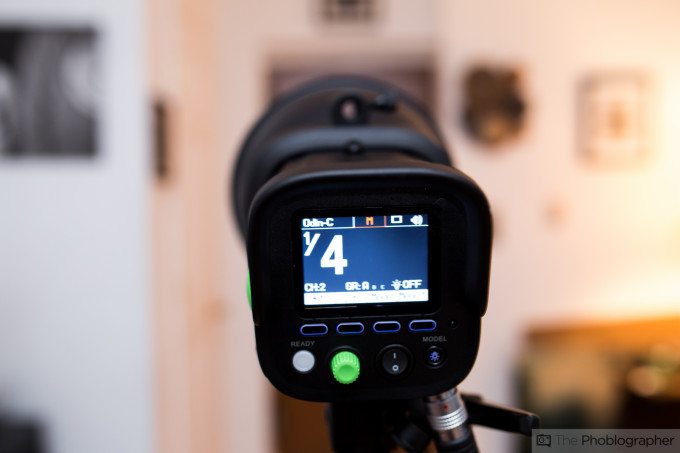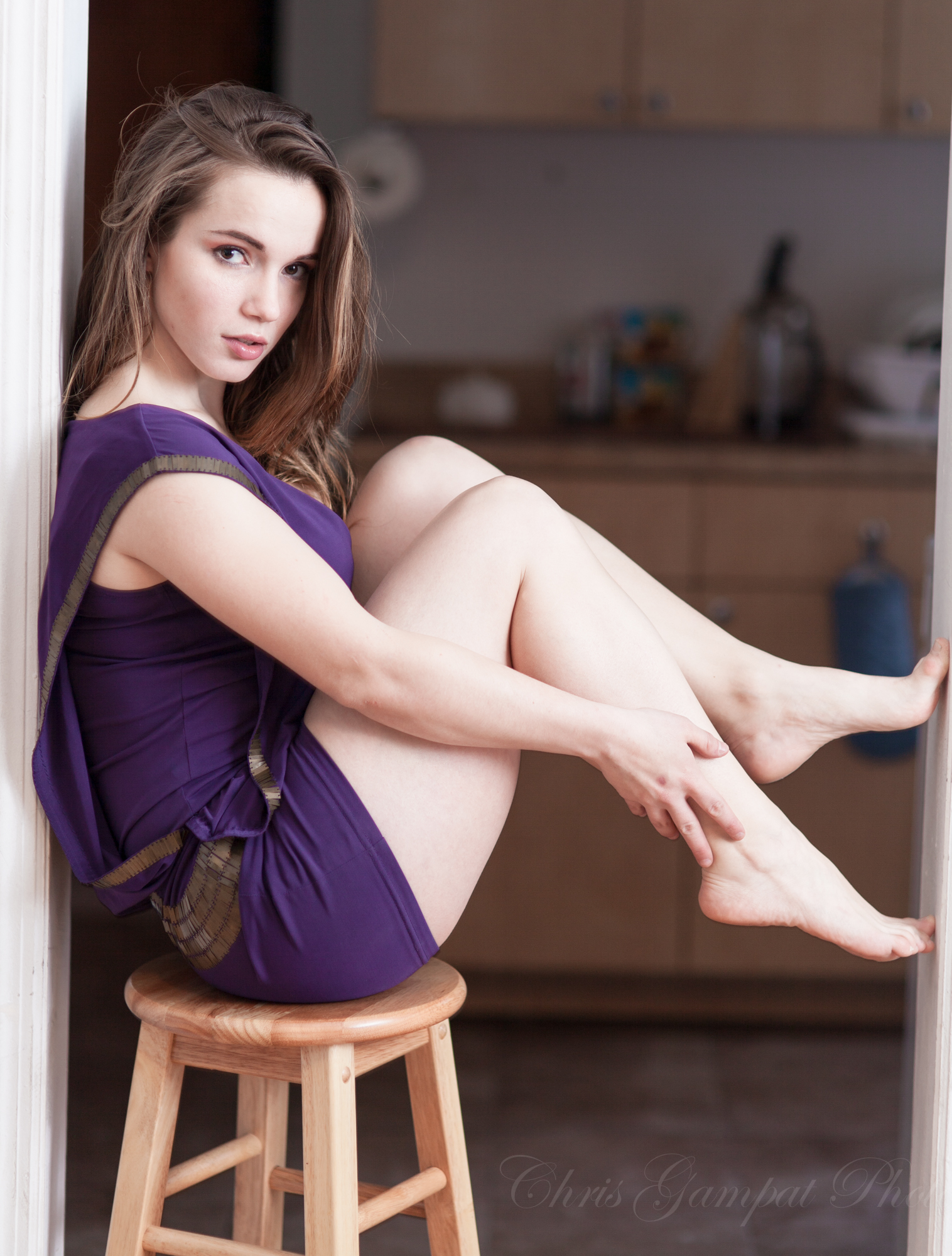This is the review that almost didn’t happen; and we have pretty much no one else to blame but ourselves.
The Phottix Indra 500 TTL was announced back during Photokina 2014, and we got our test unit back in December. Phottix’s reputation is associated with delivering products that are affordable, reliable, well built, simplistic, and effective. And when the company stated that the monolight included TTL capabilities with both Canon and Nikon cameras in one monolight plus lots of creative controls offered with other lights, it seemed like an immediate win-win situation.
Then the unit came in: and what I didn’t know at the time was that my 5D Mk II was slowly on its last legs. Additionally, we didn’t know that the first version of the Odin trigger (used the transmit and control the light) didn’t work so swimmingly. Instead, we switched to the Canon Rebel SL1 and the Canon 6D–additionally we used the Odin version 1.5. When these switches were made, we had pretty much no problems; which a high emphasis on pretty much.
We played with the Phottix Indra back around Photo Plus 2014, and found it to be a great deal. In a single package you get a light that is both AC and DC capable, has TTL transmission for both Nikon and Canon (with the possibility of Sony coming), manual light control, stroboscopic mode, an adjustable modelling light, ports for other transmitters like PocketWizards, and a well built body.
Despite how incredible the Phottix Indra 500 TTL is, it’s still not the perfect monolight–but it’s possibly the closest thing to it on the market.
Pros and Cons

Pros
– TTL light transmission with 500 watt seconds of power
– Simplistic menu interface, though sometimes a bit long. To be fair, much more compact than anyone else’s.
– Survived a tumble from six feet up
– We were able to do second curtain flash with the Canon 5D Mk II with this unit
– Compact size
– Very affordable for everything that you get in the package.
Cons
– Frosted dome glass cover shattered; and the impact prevention design could be a bit better even with the umbrella reflector attached
– Battery dies pretty darn quick when using high speed sync. Be sure to charge it after every shoot where you use the feature
– Really wish that the original Odin worked better with the unit. All it pretty much does is trigger the light.
Gear Used
We tested the Phottix Indra 500 TTL with the Canon 5D Mk II, 6D, Rebel SL1, Sigma 18-300mm lens, 35mm f1.4, 85mm f1.4, Odin version 1, Odin version 1.5, Impact’s versatile umbrella, and Westcott six foot umbrellas.
Tech Specs
Taken from the B&H Photo listing
| Maximum Watt/Seconds | 500 Ws |
| Recycle Time | With optional AC adapter: 0.1 – 1.0 sec. (Quick Flash mode – 50 full-power flashes/min) With battery: 0.1 – 2.0 sec. (Quick Flash mode – 25 full-power flashes/min) |
| Input Power | Optional AC adapter: 110 – 220 VAC, 50/60 Hz Battery pack: 5,000 mAh, 14.4 VDC, 5 Ah |
| Battery Capacity | 400 Full-power flashes on a 5.0-hr charge |
| Flash Duration | 1/250 – 1/15,000 sec @ t.1 |
| Max Sync Speed | Up to 1/8,000 sec. |
| Flash Variability | TTL: +/- 3 EV in 1/3-stop increments Manual: 8 Stops: 4.0 – 500 Ws in 1/3 or 1-stop increments |
| Changeable Reflector | Yes |
| Color Temperature | 5,500 K (+/- 200 K) |
| Modeling Light Wattage | 4.5 W LED, on, off, manual (9 adjustment levels) |
| Display | 320 x 240 TFT LCD 3 Color schemes Display auto-rotates if inverted |
| Voltage Stabilization | Yes |
| Flash Ready Indicator | Visual, audible |
| Built-in Slave Cell | Optical slave Radio, 4 channels: Odin and Strato II transmitters, Mitros+ flash, 3.5 mm sync port Range: Optical: indoors 39.36′ (12 m), outdoors 23′ (7.0 m) Radio: 328′ (100 m) |
| Fan Cooled | Yes |
| Auto Dump | Yes |
| Dimensions | 10.5 x 7.5 x 5.5″ (267 x 190 x 140 mm) |
| Weight | 4.6 lb (2.1 kg) Without optional power cable |
Ergonomics
The Phottix Indra 500 TTL is a monolight that, in many ways, looks just like other monolights. However, it’s much smaller than lots of offerings on the market in addition to being lighter. What you’ll immediately notice is the bright green branding on the monolight. It’s something that stands out and punches you right in the face.
What you’ll also notice on the top is where you can insert and lock in an umbrella. Pair this with the umbrella reflector and you’re solid.
Move around to the front and you’ll see the area that connects the umbrella reflector, speedrings, and where the light comes out from. This photo was taken after the frosted dome broke in our review. More on that later on.
On the other side, you’ll find essentially a very minimal face with the exception of a small port cover. Lift it up and you’ll find an area where you can connect a USB cable and a sound cable for radio triggers.
The back of the monolight is where all the action happens. You have the LCD screen, ready light, a fair amount of tactile buttons, a control button, modeling light button, etc.
The light is powered by one of two converters: AC or DC. Want to shoot with high speed sync? Be sure to switch the battery to that mode.
Build Quality

The Phottix Indra 500 TTL feels like a very solid monolight–more solid than the Paul C Buff Einstein E640 but not as solid as Profoto’s B1 air units. Our real test came when the monolight was on a light stand with a large umbrella attached and a gust of wind came. Despite our using weights to keep it steady, mother nature insisted that she play the role of Christian Gray with the light.
The monolight and umbrella took a tumble. The umbrella is no longer usable (sadly) but the monolight for the most part was fine. The only issue that we had is that the frosted dome glass shattered–which adds extra diffusion, protects the flash bulb and cools the color temperature. The only inconvenience that it really caused us had to do with white balancing in post-production; but that’s easily fixed.
The other issue that we had is that the battery seems to die quicker in cold weather (we’re talking about 17 degrees Fahrenheit and near the waterfront) and after using the light for high speed sync during the day, you pretty much have to charge the light. It won’t necessarily have enough juice for the next shoot.
These things have to be expected, and to be fair, any monolight is bound to have issues like this with the exception of Profoto’s B1 air units. The reasons why they don’t have this is because the reflector is incorporated into the design and so is the battery. Because of this design, you’re paying extra.
If you have no problems with using a battery pack (which is quite small) and you don’t think that you’ll be doing something crazy as shooting with a large umbrella on a slightly windy day, then don’t worry.
Ease of Use
The Phottix Indra 500 TTL monolight has lots of settings that can be changed. You have the option of using the Odin 1.5 or Odin 2 to control the light, but you won’t see the changes physically reflected on the LCD screen. You can be confident that your transmitter will totally take over though.
If you want to change the settings on the light itself, you’ve got around four menus that you can go through by pressing one of the four buttons and scrolling through with the green button. This button can also be clicked to confirm your settings.

What we were incredibly amazed at is the fact that the light is capable of doing second curtain sync with Canon DSLRs–which for years gave many photographers problems. That’s not an issue anymore, and we’re excited to know that we can do more second curtain sync work with the light.
Image Quality

The Phottix Indra 500 TTL is a monolight that delivers 500 watt seconds of power–that’s more than five typical speedlights. That and it puts all the light in one spot.
So why would you need something that power?
– Large light modifiers for softer lighting
– Large halls and rooms to illuminate at a lower ISO
– Keeping your ISO levels down
– Usually a much faster flash duration which freezes fast motion and gives you super sharp images.
When all of our issues were ironed out, we couldn’t get over the incredible the image quality that the Indra 500 TTL can deliver.
Light Output
This light puts out a consistent 500 watt seconds of light according to light meter readings and doesn’t tend to lose power throughout shooting. The light that it delivers is also beautiful and specular.
500 watt seconds is also much more than most photographers need.
Power
Want to overpower the sun? You can do it through high speed sync capabilities with this light or without using them and only resorting to an ND filter. For the most part, any situation or challenge that you encounter which shooting can be tackled with this light and modern digital camera technology.
We tried testing the light with an older Canon Elan 7 SLR from the film days, but the Odin 1.5 didn’t quite fit into the hot shoe. We’re going to try it eventually.
Color Consistency
During our tests, we didn’t find a major problem with color consistency when using this monolight, but when they happened they were also quite minor. You’re not going to get Profoto or Broncolor’s performance, but it’s more than good enough for the majority of photographers out there who also know how to use Lightroom’s edit sync features.
Extra Image Samples
Conclusions
Likes
– Good build quality
– Simple interface
– Integrates well into the rest of the Phottix system
– Powerful light output
– For what you’re getting, it’s at a damned good price
Dislikes
– Really wish that the Odin version 1 worked deeper with the light.
For years, we’ve been asking for a monolight that can do both TTL transmission and manual transmission simply. Then Profoto gave it to us. Then Phottix came out with their solution which was years in development; and it’s exciting.
Now, more than ever, it’s easier to get into lighting: we are truly in an exciting time in the photo world.
The Indra 500 TTL monolight is simple to use, sturdy, has loads of light output, is compact for carrying, and at the end of a long shooting day doesn’t end up killing my back. What more could we really ask for?
We award the Phottix Indra 500 TTL five out of five stars, and our coveted Editor’s Choice Award. Want one? Check out B&H Photo’s website for the latest prices.
Recommended Cameras and Accessories


